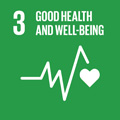- Docente: Nico Lanconelli
- Credits: 6
- SSD: FIS/07
- Language: English
- Teaching Mode: Traditional lectures
- Campus: Bologna
-
Corso:
Second cycle degree programme (LM) in
Physics (cod. 9245)
Also valid for Second cycle degree programme (LM) in Physics (cod. 6695)
-
from Sep 16, 2025 to Dec 17, 2025
Learning outcomes
At the end of the course the student will be able to: - describe the basic issues and the principal applications of image processing; - demonstrate a good understanding of the current state-of-the-art image processing methods; - identify, demonstrate and apply his/her knowledge by analyzing image processing problems and recognizing and employing (or proposing) effective solutions; - design and create practical solutions to a range of common image processing problems. The student will also get the basic knowledge on the main algorithms for: - filtering in the spatial and frequency domain; - image segmentation; - object detection and recognition.
Course contents
- Visual perception
- Image formation: geometry and radiometry
- From analog to digital images
- Digital image chain: acquisition, visualization, and processing
- Image processing:
- Geometric operations
- Point operations
- Local operations
- Image segmentation
- Fourier analysis
- Image segmentation
- Feature extraction
- Lab sessions with ImageJ
Readings/Bibliography
–Gonzalez R., Woods R.: “Digital Image Processing”, Third Edition, Pearson Prentice-Hall, 2002
Teaching methods
Lectures, lab practice.
In order to attend the training sessions, all students are required prior attendance of e-learning modules 1 and 2 on health and safety in workplaces
Assessment methods
In the last weeks of the classe students will tackle a real-word problem (compulsory):
- Group project (small groups: 4/5 people)
- Reading scientific paper
- Finding material (bibliography, images, …)
- Understanding and implementation of some algorithms
- Presentation (both written report and oral presentation) of the project and its outcomes
Final examination: discussion of the group project and oral interview.
Teaching tools
Software for image processing: ImageJ.
Office hours
See the website of Nico Lanconelli
SDGs

This teaching activity contributes to the achievement of the Sustainable Development Goals of the UN 2030 Agenda.
